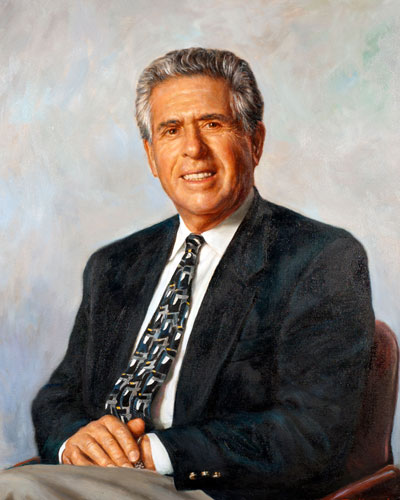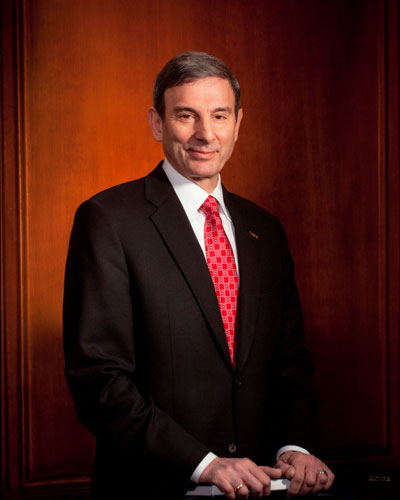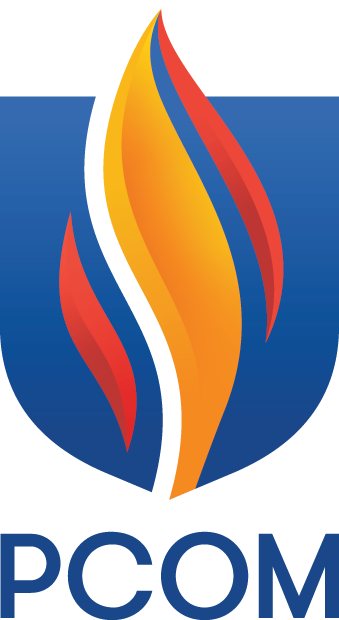1990 – 2000
Leonard H. Finkelstein, DO '59, MSc '63, FACOS, has played an important role in shaping PCOM as an educator, a clinician and from
1990-2000, as the College's sixth president. He received his DO degree in 1959 and
after an internship and general surgery residency at Zieger Osteopathic Hospital in
Detroit, returned to his alma mater in 1961 for a residency in urologic surgery.
Finkelstein officially joined the College faculty in 1970 as chairman of the Division
of Urology. Before stepping down from this post in 1993 to focus on his responsibilities
as PCOM's president, he developed an outstanding urology residency program.
Finkelstein was a preeminent urologic surgeon, trained in a PCOM tradition begun by
H. Willard Sterrett, DO (1917), in the 1940s, yet focused on cutting-edge ideas and
technologies such as laser surgery, which he introduced to PCOM's Division of Urology
in the early 1980s. As a pioneering researcher in urology in the osteopathic profession,
he lectured and published extensively. In October 1984 Finkelstein became the first
DO urologist to publish in the Surgical Clinics of North America, and the first DO
not affiliated with an allopathic institution to publish in The American Journal of
Surgery.
As president, Finkelstein steered PCOM through times that threatened the very survival
of the institution. He orchestrated the purchase of Metropolitan Hospital's Parkview
Division in 1990 and eventually sold both Parkview and Barth Pavilion to Graduate
Health System in 1993. These transactions resulted in a financial turnaround for the
College, moving from a $6 million deficit to a $4 million surplus within a year.
Under his leadership, the College's curriculum was enhanced, the graduate medical
education program expanded, and a modern campus was developed through a master facilities
plan. Dr. Finkelstein also rebuilt the College's financial foundation through a successful
$25 million capital campaign.
He was a dedicated advocate for the osteopathic profession and served as president
of the American Osteopathic Foundation Board of Directors and the Pennsylvania Osteopathic
Medical Association. Finkelstein received several prestigious awards, including the
Christian R. and Mary F. Lindback Award for Distinguished Teaching and the Distinguished
Osteopathic Surgeon Award.
He stepped down as president in 2000 to become the chancellor until his passing in
2019. He retired from his academic posts in 2014 and was named professor emeritus
in 2015.

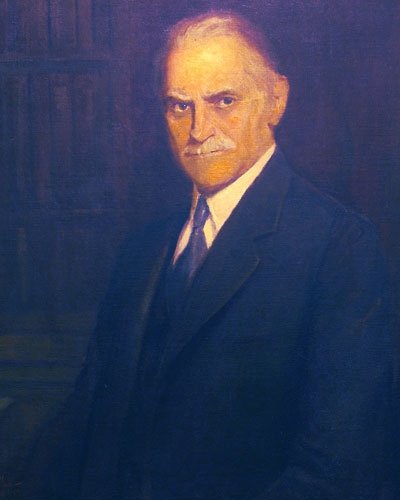 Oscar John Snyder, DO, co-founded the Philadelphia College and Infirmary of Osteopathy
in 1899 along with Reverend Mason Wiley Pressly, DO. Dr. Snyder served as the College's
first president and continued to be involved as a trustee until his death in 1947.
Under Dr. Snyder's leadership, the College experienced significant growth in facilities,
students, and faculty.
Oscar John Snyder, DO, co-founded the Philadelphia College and Infirmary of Osteopathy
in 1899 along with Reverend Mason Wiley Pressly, DO. Dr. Snyder served as the College's
first president and continued to be involved as a trustee until his death in 1947.
Under Dr. Snyder's leadership, the College experienced significant growth in facilities,
students, and faculty.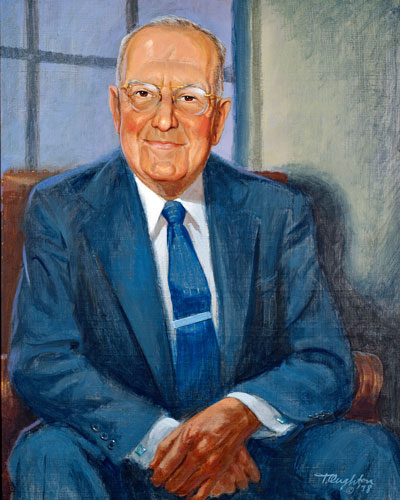 William E. Brandt, DO, became the second president of the Philadelphia College of
Osteopathy (PCO) in 1953 after the College and hospital were consolidated into a single
corporation.
William E. Brandt, DO, became the second president of the Philadelphia College of
Osteopathy (PCO) in 1953 after the College and hospital were consolidated into a single
corporation.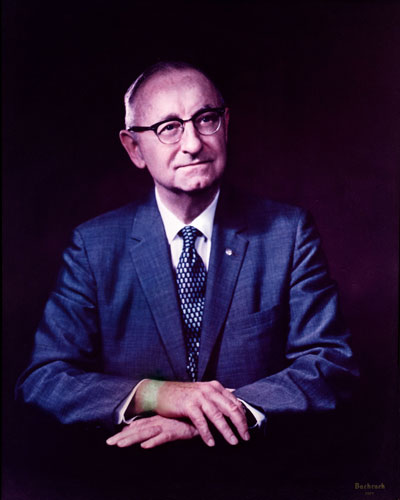 Frederic H. Barth began his service to the institution in 1948 as a member of the
Hospital board of directors and then the College board of directors. By the year's
end, he became chairman of both boards. Dr. Barth played a crucial role in merging
the two entities into a single Pennsylvania corporation, serving as its president.
Frederic H. Barth began his service to the institution in 1948 as a member of the
Hospital board of directors and then the College board of directors. By the year's
end, he became chairman of both boards. Dr. Barth played a crucial role in merging
the two entities into a single Pennsylvania corporation, serving as its president.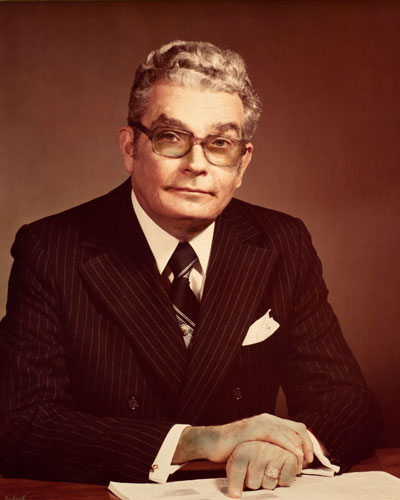 Thomas M. Rowland, Jr. devoted 34 years of his life to PCOM, distinguishing himself
as a leader, an educator and a friend to students, alumni, faculty and employees.
Rowland was a World War II veteran (an experience he shared with many students and
alumni) and a graduate of Temple University with postgraduate studies in public administration.
Thomas M. Rowland, Jr. devoted 34 years of his life to PCOM, distinguishing himself
as a leader, an educator and a friend to students, alumni, faculty and employees.
Rowland was a World War II veteran (an experience he shared with many students and
alumni) and a graduate of Temple University with postgraduate studies in public administration. J. Peter Tilley, a radiologist with dual certification in nuclear medicine, joined
the faculty of PCOM in 1966. He held various leadership positions, including vice
chairman of radiology and director of nuclear medicine, before being elected as the
fifth president of PCOM in 1984.
J. Peter Tilley, a radiologist with dual certification in nuclear medicine, joined
the faculty of PCOM in 1966. He held various leadership positions, including vice
chairman of radiology and director of nuclear medicine, before being elected as the
fifth president of PCOM in 1984.